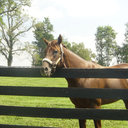Potential of the angiotensin receptor blockers (ARBs) telmisartan, irbesartan, and candesartan for inhibiting the HMGB1/RAGE axis in prevention and acute treatment of stroke.
الكلمات الدالة
نبذة مختصرة
Stroke is a major cause of mortality and disability worldwide. The main cause of stroke is atherosclerosis, and the most common risk factor for atherosclerosis is hypertension. Therefore, antihypertensive treatments are recommended for the prevention of stroke. Three angiotensin receptor blockers (ARBs), telmisartan, irbesartan and candesartan, inhibit the expression of the receptor for advanced glycation end-products (RAGE), which is one of the pleiotropic effects of these drugs. High mobility group box 1 (HMGB1) is the ligand of RAGE, and has been recently identified as a lethal mediator of severe sepsis. HMGB1 is an intracellular protein, which acts as an inflammatory cytokine when released into the extracellular milieu. Extracellular HMGB1 causes multiple organ failure and contributes to the pathogenesis of hypertension, hyperlipidemia, diabetes mellitus, atherosclerosis, thrombosis, and stroke. This is the first review of the literature evaluating the potential of three ARBs for the HMGB1-RAGE axis on stroke therapy, including prevention and acute treatment. This review covers clinical and experimental studies conducted between 1976 and 2013. We propose that ARBs, which inhibit the HMGB1/RAGE axis, may offer a novel option for prevention and acute treatment of stroke. However, additional clinical studies are necessary to verify the efficacy of ARBs.



